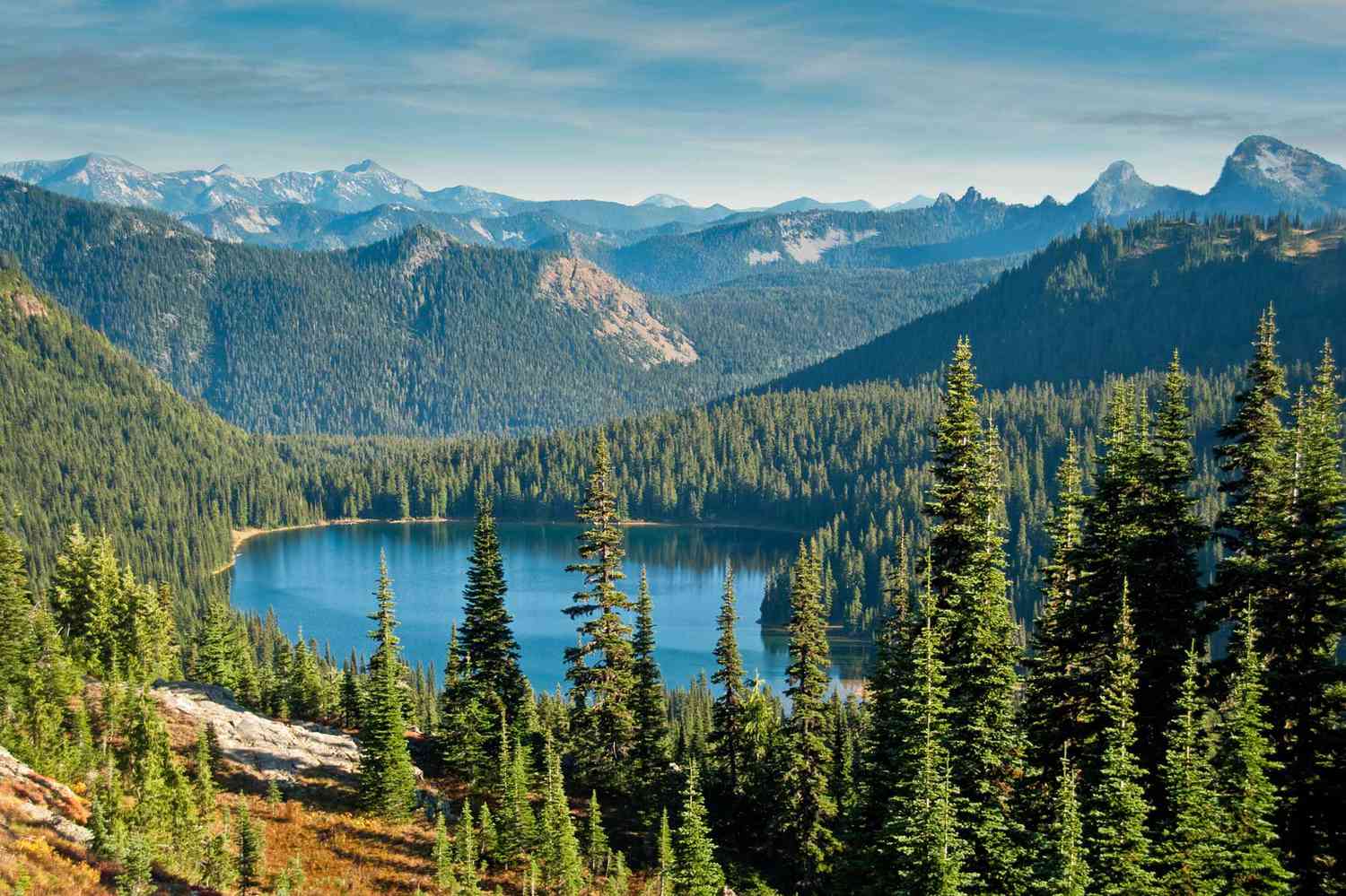
Mountains are some of the most awe-inspiring and majestic natural wonders on our planet. They have captivated explorers, inspired poets, and challenged adventurers for centuries. While we may think we know a lot about mountains, there are countless surprising facts that still remain hidden in their peaks and valleys. In this article, we will uncover 14 fascinating facts about mountains that will leave you amazed and eager to embark on your own mountainous adventure. From incredible formations and mysterious folklore to mind-boggling records and important ecological roles, these facts will shed light on the extraordinary world of mountains. So, get ready to be blown away by these breathtaking revelations and gain a new appreciation for these towering giants of the Earth.
Key Takeaways:
- Mountains are not just tall landforms; they are home to diverse ecosystems, ancient rock formations, and valuable mineral resources, shaping the world’s geography and offering unique experiences for adventurers.
- From the highest peak on Earth, Mount Everest, to the oldest mountain range in North America, the Appalachian Mountains, each mountain has its own story, beauty, and significance, making them fascinating natural wonders to explore.
The tallest mountain in the world is Mount Everest.
Soaring at an impressive height of 29,029 feet (8,848 meters), Mount Everest stands as the highest peak on Earth, captivating adventurers and mountaineers alike.
The Andes Mountains form the longest mountain range.
Stretching across seven South American countries, including Argentina, Chile, and Peru, the Andes Mountains span over 4,300 miles (7,000 kilometers), making them the longest continental mountain range in the world.
Mount Kilimanjaro hosts an extraordinary range of ecosystems.
Located in Tanzania, Mount Kilimanjaro is home to five distinct ecological zones, including lush rainforests, alpine meadows, and arctic-like glaciers, offering climbers a unique experience like no other.
The Alps are known as the “Roof of Europe.”
The majestic Alps, stretching across eight European countries, hold this distinguished title due to their extraordinary height and breathtaking panoramic views that overlook the continent’s picturesque landscapes.
K2 is the second-highest mountain in the world.
Standing tall in the Karakoram Range on the border between China and Pakistan, K2, also known as Mount Godwin-Austen, reaches a remarkable height of 28,251 feet (8,611 meters), making it a formidable challenge for climbers.
The Great Dividing Range dominates the Australian landscape.
Spanning over 2,300 miles (3,700 kilometers), the Great Dividing Range runs parallel to the eastern coast of Australia, shaping the country’s diverse landscapes and serving as a natural barrier between the coastal regions and the vast interior.
The Himalayas are home to the highest peaks in the world.
With an awe-inspiring collection of over 100 mountains exceeding 23,622 feet (7,200 meters), the Himalayas boast the most elevated summits on Earth, including the mighty Mount Everest.
The Rocky Mountains stretch across North America.
Running from the United States to Canada, the Rocky Mountains span over 3,000 miles (4,800 kilometers) and showcase breathtaking scenery, diverse wildlife, and iconic national parks, such as Yellowstone and Rocky Mountain National Park.
The Matterhorn is one of the most iconic mountains in the world.
Towering at 14,692 feet (4,478 meters) on the Swiss-Italian border, the Matterhorn’s distinctive pyramid-like shape has made it a symbol of mountaineering and a bucket-list destination for climbers and photographers.
The Appalachian Mountains are the oldest mountain range in North America.
Formed over 480 million years ago, the Appalachian Mountains span over 1,500 miles (2,400 kilometers), showcasing ancient rock formations, rich biodiversity, and charming landscapes that delight hikers and nature enthusiasts.
The Ural Mountains divide Europe and Asia.
Stretching across 1,550 miles (2,500 kilometers), the Ural Mountains are a natural boundary between the continents of Europe and Asia, providing a distinct geographical and cultural divide.
The Sierra Nevada Mountains house the highest peak in the contiguous United States.
Mount Whitney, located in the Sierra Nevada range of California, stands at an impressive height of 14,505 feet (4,421 meters), offering breathtaking views and challenging trails for avid adventurers.
The Drakensberg Mountains are renowned for their stunning rock formations and cave art.
South Africa’s Drakensberg Mountains are not only visually striking but also hold historical and cultural significance. They feature magnificent sandstone cliffs, awe-inspiring peaks, and ancient rock art sites, making them a UNESCO World Heritage Site.
The Tien Shan Mountains are rich in mineral resources.
Spanning across Central Asia, the Tien Shan Mountains boast vast reserves of minerals, including gold, silver, and various rare earth elements, attracting mining expeditions and contributing to the regional economy.
Conclusion
In conclusion, mountains are not just majestic and breathtaking, but they also hold a plethora of surprising facts that can leave us in awe of their sheer beauty and power. From their formation and diverse ecosystems to their role in shaping weather patterns, mountains truly are wonders of nature. The tallest peaks in the world, like Mount Everest, continue to challenge and inspire adventurers from all corners of the globe. So the next time you find yourself gazing at a mountain range, take a moment to appreciate the fascinating stories that lie within these majestic giants.Remember, mountains are not just landforms; they are guardians of biodiversity, water sources, and ancient histories. They are a symbol of resilience and a reminder of the immense power of nature. So whether you enjoy hiking, skiing, or simply admiring their beauty from afar, let these surprising facts about mountains enrich your appreciation for these awe-inspiring wonders.
FAQs
Q: How are mountains formed?
A: Mountains are formed through tectonic plate movements and volcanic activities. When two plates collide, they form mountain ranges through processes like compression, folding, and faulting.
Q: What is the highest mountain in the world?
A: Mount Everest, located in the Himalayas, stands as the world’s highest peak at a towering height of 29,032 feet (8,848 meters) above sea level.
Q: Do mountains influence weather patterns?
A: Yes, mountains have a significant impact on weather patterns. They can block or redirect air masses, leading to variations in temperature, humidity, and precipitation on either side of the mountain range.
Q: Are there any animals living in mountains?
A: Yes, mountains are home to a wide variety of animals. From elusive snow leopards and mountain goats to diverse bird species, these habitats support unique flora and fauna that have adapted to survive in high-altitude environments.
Q: How do mountains contribute to the water cycle?
A: Mountains play a crucial role in the water cycle. They capture and store precipitation in the form of snow and ice, which slowly melts and flows downstream, providing fresh water to rivers and lakes in lower elevations.
Q: Can mountains cause earthquakes?
A: Yes, mountains can be associated with seismic activity. The movement of tectonic plates and the formation of mountains can lead to earthquakes, especially in areas where there is high tectonic stress.
Uncover more fascinating facts about our world, from the awe-inspiring geological formations of geyser basins to the historical discoveries that shaped our past. Delve into the mysteries of geysers, hot springs, and mudpots, learning how these natural wonders come to be. Journey through time, exploring significant events that occurred on February 6th, gaining a deeper understanding of our collective history. Expand your knowledge and appreciation for the incredible diversity and complexity of our planet and its past.
Was this page helpful?
Our commitment to delivering trustworthy and engaging content is at the heart of what we do. Each fact on our site is contributed by real users like you, bringing a wealth of diverse insights and information. To ensure the highest standards of accuracy and reliability, our dedicated editors meticulously review each submission. This process guarantees that the facts we share are not only fascinating but also credible. Trust in our commitment to quality and authenticity as you explore and learn with us.


